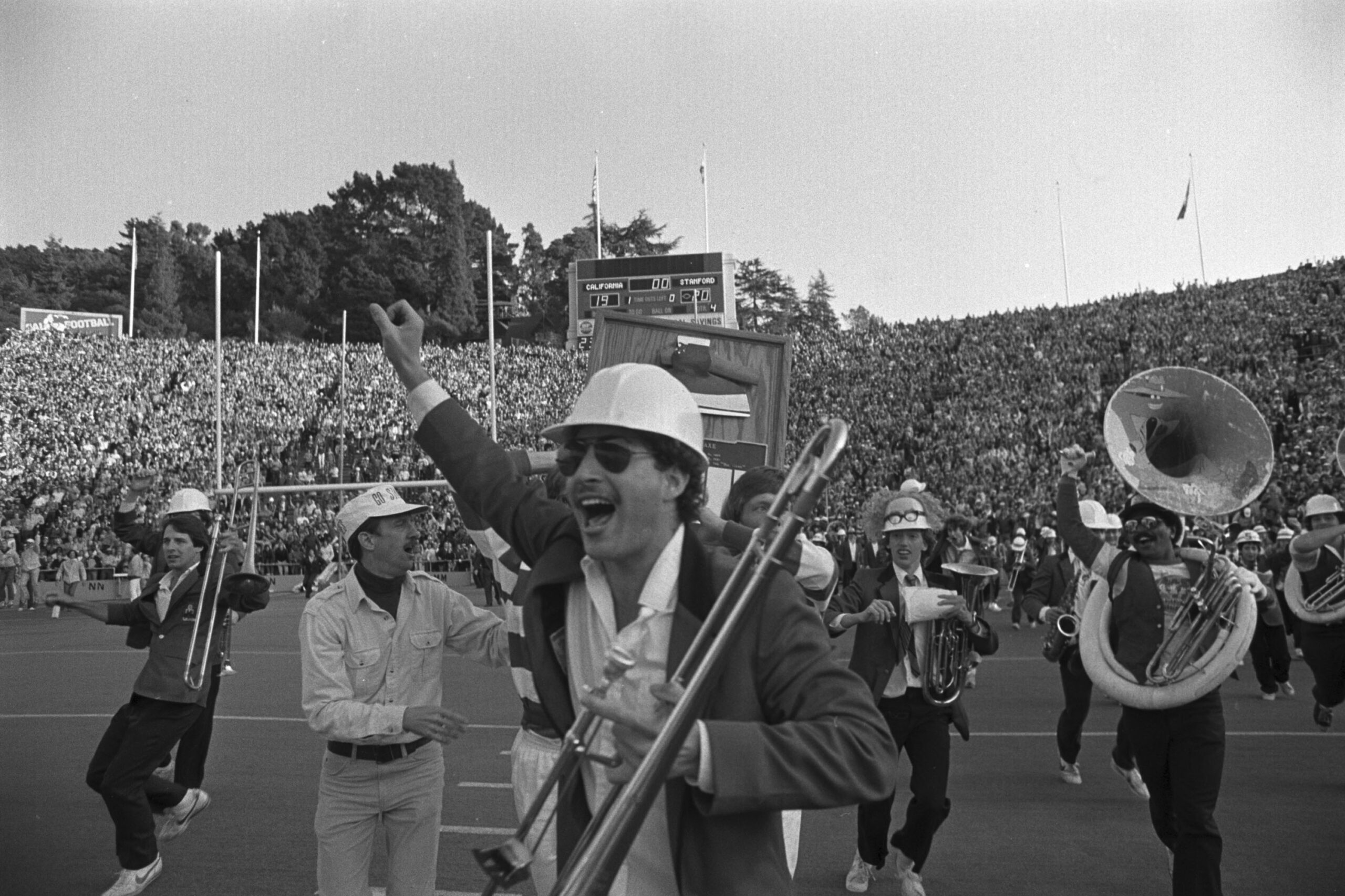
The Stanford band goes on the field at the end of the Cal-Stanford game in Berkeley, thinking they had won, Nov. 20, 1982. Cal's Kevin Moen weaved his way through the band to score a touchdown after time had run out, giving Cal a 25-20 win over Stanford
Tyler Bridges, NF ’12, on writing about the craziest finish in college sports history
It was December 2016, and my daughter Luciana and I were sitting in an outdoor jacuzzi after a day of skiing at Lake Tahoe. A guy in the jacuzzi mentioned he had graduated from University of California at Berkeley. When he learned I had graduated from Stanford, he couldn’t resist teasing me about the Stanford-Cal game in 1982 — when the Stanford band was in the wrong place at the wrong time, creating the wildest finish in the history of college football. Afterward, I showed Luciana the video. Not for the first time, I got tears in my eyes as I watched it. I thought: I have to write a book on that game!
Why the reaction? It connected me with warm memories from my youth. I grew up in Palo Alto attending Stanford football games with my father and sisters. And during four years at Stanford, I played trombone in the marching band, which didn’t actually march. I still remember where I was when I listened to that famous game, having graduated five months earlier.
But how do you write a book about a play that lasted 21 seconds? An initial set of interviews told me I would have plenty of great backstories to set up what happened that day. Central to the story was Stanford’s John Elway, considered one of the greatest quarterbacks of all time. The intense rivalry between two academic powerhouses separated by only 40 miles provided the perfect backdrop.
The research took me four years, which I did around my day job covering Louisiana politics. I photocopied 1,500 articles from nine different Bay Area newspapers and interviewed 375 people — players, coaches, referees, fans, broadcasters, reporters. The result was my book, “Five Laterals and a Trombone.”
Throughout, my guide was the premise of the 1970s TV show “Columbo,” where the murder always took place at the beginning. You then watched to see how the quirky detective solved the mystery. I figured readers would know who had won the game but would want to turn the page to learn what happened next if I had 5,000 great details and anecdotes that put them on the field and in the locker room. The reaction from readers tells me I took the right approach.

